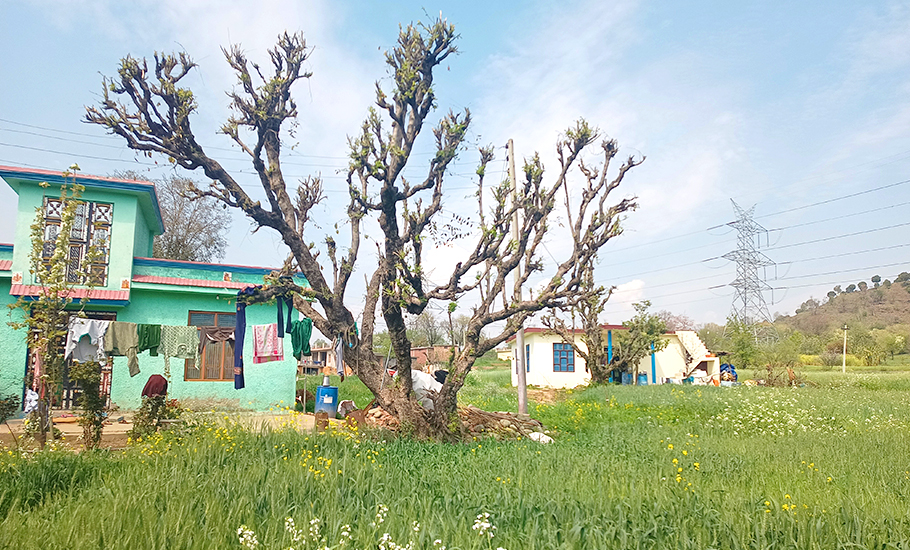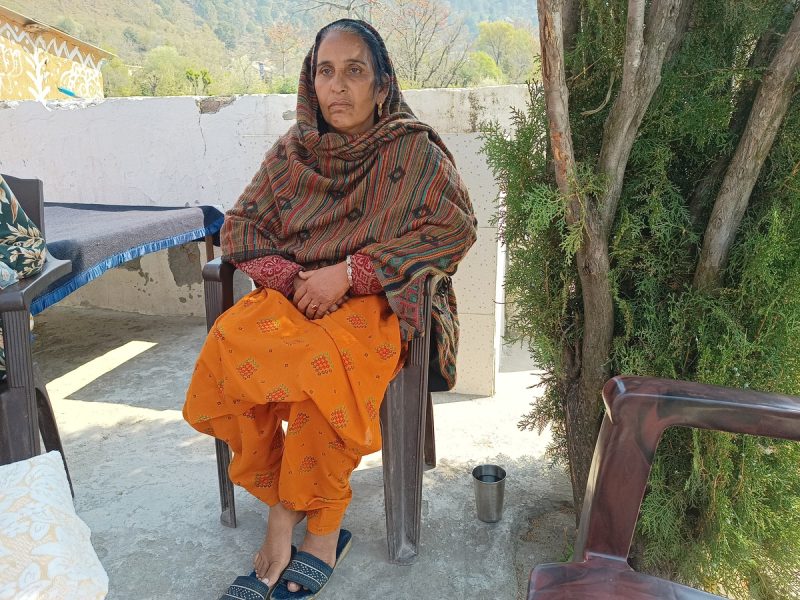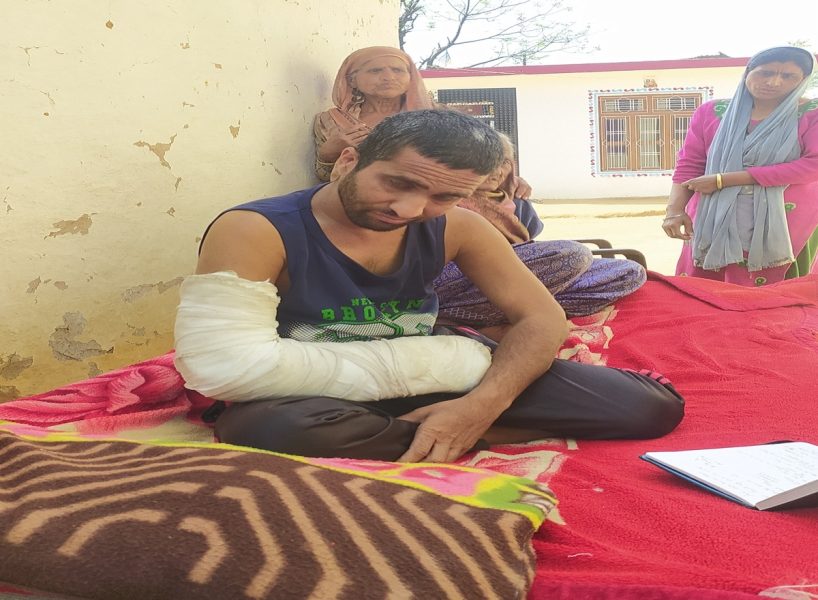
- Home
- India
- World
- Premium
- THE FEDERAL SPECIAL
- Analysis
- States
- Perspective
- Videos
- Sports
- Education
- Entertainment
- Elections
- Features
- Health
- Business
- Series
- In memoriam: Sheikh Mujibur Rahman
- Bishnoi's Men
- NEET TANGLE
- Economy Series
- Earth Day
- Kashmir’s Frozen Turbulence
- India@75
- The legend of Ramjanmabhoomi
- Liberalisation@30
- How to tame a dragon
- Celebrating biodiversity
- Farm Matters
- 50 days of solitude
- Bringing Migrants Home
- Budget 2020
- Jharkhand Votes
- The Federal Investigates
- The Federal Impact
- Vanishing Sand
- Gandhi @ 150
- Andhra Today
- Field report
- Operation Gulmarg
- Pandemic @1 Mn in India
- The Federal Year-End
- The Zero Year
- Science
- Brand studio
- Newsletter
- Elections 2024
- Events
- Home
- IndiaIndia
- World
- Analysis
- StatesStates
- PerspectivePerspective
- VideosVideos
- Sports
- Education
- Entertainment
- ElectionsElections
- Features
- Health
- BusinessBusiness
- Premium
- Loading...
Premium - Events

How terror attack has fuelled communal tension in a harmonious Jammu village

A gentle breeze is brushing through the wheat fields on the foothills of Upper Dhangri in Jammu’s Rajouri district, dotted with dozens of houses belonging to refugees from West Pakistan. These single-storey, concrete houses are surrounded by trees and lush green fields, but also by suspicious eyes. The springtime breeze also carries with it a strange silence. What was once a hamlet of...
A gentle breeze is brushing through the wheat fields on the foothills of Upper Dhangri in Jammu’s Rajouri district, dotted with dozens of houses belonging to refugees from West Pakistan. These single-storey, concrete houses are surrounded by trees and lush green fields, but also by suspicious eyes.
The springtime breeze also carries with it a strange silence. What was once a hamlet of harmony is now an abode of mistrust. Muslims and Hindus used to live here in peace and visit each other happily, but all of that changed after the twin terror attacks that took place on January 1 this year. The attacks left seven people, including two children, dead and 14 others injured.
Over three months have passed since the unprecedented attack. On a sunny Sunday morning, a group of villagers gather to discuss this year’s maize cultivation. Their deliberation veers off to the recent tragedy — the first-of-its-kind since their migration from Pakistan during the Partition in 1947 — and the seeds of fear and mistrust it has sown.
After the attacks, the village is deeply divided along communal lines, with tensions running high, and the division having resulted in significant social and political issues within the village, impacting relationships between community members, and causing a sense of disunity.
Krishan Lal, a farmer, says, “Maize plants grow quite tall, and because of that, we may not be able to keep an eye on each other’s houses. After the killings, we are all scared for our safety. This is a small village, and we need to look out for each other and take care of the whole neighbourhood.”
The lone survivor
Few meters above the small under-construction road resides Saroj Bala (58), who lost her two young sons — Deepak Sharma (27) and Prince Sharma (21) — in the January attack. On the rooftop of her house, a few security personnel keep an eye on the surrounding houses, fields and the nearby lush green hillock. Her neighbours and relatives are doing their best to provide comfort and support during this difficult time, offering words of consolation and encouragement to help lift her spirits.

Saroj is the only survivor in her family and has been living alone for over three months now. “I lost my husband to cancer a few years ago, and now I have nobody to take care of. My only goal in life is to get justice for my young sons,” she says. “If the Home Minister (Amit Shah, who spoke to her over the phone) won’t be able to visit me, I have decided to go to Delhi and meet him there to seek justice for myself.”
Deaths in the village
On January 1, two gunmen entered three houses in Upper Dhangri, opening fire and killing four people on the first day of the attack. After a week, Prince, who was critically injured, passed away at Jammu Government Medical College. Then, on January 2 at around 9:30 am, an improvised explosive device (IED) exploded near a window at Saroj Bala’s house, killing two minor cousins, and injuring several others.
“We were protesting at Dhangri Chowk when the explosion occurred,” says Susheel Kumar Sharma, Saroj Bala’s brother-in-law. “At that time, we were away from our village, and only a few elderly people, children, and women were present. Even some media persons were taking pictures here. Soon after they left, the IED exploded.”
Susheel, a grieving father, lost his four-year-old son Vihan in the explosion caused by the IED, which he believes was the result of security negligence. “If the area and houses were sanitized, more lives could have been saved,” he says.
On the other hand, Saroj blames doctors’ negligence at Rajouri’s Government Medical College for the death of her second son, Prince. According to Saroj, Prince was talking for five days in the hospital, and doctors had assured her that he was 99% in the recovery stage.
However, on the fifth day, a test revealed an infection. “His spinal cord was broken and they told me that one of his limb veins was blocked due to the infection,” she says. They were sent to Jammu, which is around 150 kilometers from Rajouri.
Prince’s condition worsened during the journey, after they had covered around 40 km, and he started bleeding. They went back to the Rajouri hospital, where he was kept for the night. The next day, they were sent to Jammu via chopper. However, Prince’s infection had already become worse, and he eventually passed away. “The hospital wasted crucial time. They could have saved Prince’s life if they had acted quickly,” she says.
The cauldron of fear and anger
During the primary phase of militancy, Dhangri never witnessed any such incident. The West Pakistan refugees lived here happily, along with the Muslims. But now everything seems to have changed. After the incident, communities don’t visit each other. “Earlier, we would visit each other’s house till late night,” says Pawan Kumar, a 34-year-old driver. “But now, after 6 pm, we close our doors and remain inside.” Pawan was injured when he was fired upon by militants after they killed Saroj’s son, Deepak. “It was around 6:45 pm and I was busy with my prayers,” he recalls.
“Suddenly, I heard screams and a loud noise. I rushed to the gate and was confronted by two militants, who were firing their weapons randomly as they made their way towards the nearby hill. I was hit by a bullet in my arm as I tried to protect myself. Despite the pain, I managed to close the gate, but the militants continued to unleash a barrage of gunfire towards our house. After what seemed like an eternity, we managed to contact each other and gathered in our neighbourhood for safety. The rest of the details are a blur to me. When I finally regained consciousness, I found out that the entire village had been taken to the hospital,” says Pawan.
Pawan is currently undergoing treatment for his arm at the PGI hospital in Chandigarh, and the government has provided him with a relief amount of Rs one lakh for his injuries. However, he has already used up the entire amount, along with his personal savings, to cover the medical expenses. Additionally, he is struggling to cover the costs of travel and logistics, and his medical insurance (golden card) is not applicable at this hospital. According to the doctors, his recovery may take over a year. Meanwhile, Pawan is also concerned about the education of his two daughters as he doesn’t have enough money to pay their school fees.
Over three months have passed, but the culprits have yet to be brought to justice, says Satpal Kumar, Pawan’s father. “The perpetrator(s) could be living among us,” Satpal says. “It is unlikely that an outsider would commit this crime with such precision. Many agencies had visited us and promised justice, but they no longer visit us. The government has not presented any evidence so far,” he adds. According to Satpal, the attackers first checked the identity cards of Deepak and his two Muslim friends who were with him. “They only killed Deepak,” he adds. “If the government does not produce any evidence, the killers will likely disappear.”
Rohit Kumar, 27, is sitting on a charpoy, with his white plastered arm. He too was shot at. “It was around 6:30 pm when I was at my aunt’s place. We heard Deepak’s screams, and when we went out, we saw two people in fatigues and bandanas. They fired at us, including my aunt,” Rohit recalls. “When they stopped to refill their magazine, my aunt managed to escape towards the back of the house.”
Before joining the Army as a porter, Rohit sold ice-cream in the village. “I’ve already undergone four surgeries on my arm,” he says. “Now, I have to go back to Jammu for further treatment. The treatment is free, but we have to bear the cost of travel and logistics ourselves,” Rohit says, pointing to the hills where the alleged militants fired from before disappearing.
Division along communal lines
The majority of the population in the upper Dhangri belt of ward number 6 comprises West Pakistan refugees, mostly Hindus. These refugees migrated from Pakistan during the Partition in 1947 and chose to settle in India. The Indian government at that time provided Rs. 5.5 lakh per family as compensation.
In the 1990s, when militancy erupted in Jammu and Kashmir, the government introduced the Village Defence Committees (VDC) scheme to arm and train civilians, mostly Hindus, in remote areas of Jammu for self-defence and to act as informers to the police or army against militants in their areas. This selective arming of civilians was criticized by several human rights groups.
After normalcy returned to the erstwhile state of Jammu and Kashmir, many VDC groups became dysfunctional. “The government provided .303 rifles to many VDC members thirty years ago. Most members are no longer patrolling or using those guns. They have kept them in their homes, and the guns have rusted,” says Dheeraj Sharma, sarpanch of Upper Dhangri.
Last year, the government decided to reintroduce the VDCs in Jammu as Village Defence Groups (VDGs), and after the Dhangri attack, work in this direction gained pace. The VDGs will be provided with hi-tech weapons, and leaders of the groups will be paid Rs. 4,500 per month, while others will be paid Rs. 4,000 per month. In VDCs, only Special Police Officers were given Rs. 1,500 per month.
Satish Kumar, an ex-army personnel from Upper Dhangri, was recently given an SLR, and he joined the VDC. “Our system has a weakness,” he says. “The government has deployed forces in peaceful areas, but what about our area where we are living as refugees? The government has resources, they can set up forces here. A VDC member cannot save a village with just a gun; this gun is for self-defence only.”
If the government has to implement the scheme, they should motivate civilians by providing them remuneration, says the former Army man. “Otherwise, why would a person do patrolling or carry a gun 24/7 without any reason? He will protect himself only. The government should run a special recruitment drive in Upper Dhangri and take young boys as special forces, who will serve in their own region only. Life insurance should be part of the scheme,” he says.
Saurabh Sharma, BJP Block President of Upper Dhangri, says that 75 self-loading rifles (SLRs) have already been issued in the area, with 58 given to ex-army men and the rest to civilians. “The weapons were provided under the VDC scheme, and the implementation of the VDG scheme is yet to happen,” he says.
Rajesh Kumar, another VDC member who is an ex-army man, claimed that the twin attack was not a simple militant attack. “A militant has limited ammunition and he cannot waste it in random firing. It is a planned action by someone from the ‘other’ community,” he says. After the attack, Rajesh received a gun and is now training his wife and kids to protect themselves in case he is not present at home.

In contrast, Rakesh, another VDC member, does not do night patrolling or search the village or upper hill. “We have informed each other that if something happens, we will communicate on mobile phones and everyone will come out with guns,” he says. “Recently, many villagers have decided they would soon order bullet-proof jackets, head covers, and other safety equipment from Pathankot on their own for added protection,” he adds.
Tension runs high
Despite the government’s claims that VDCs have played an important role in tracking militants and their infiltration, VDC members have faced serious allegations of violations and heinous crimes, including rape, murder, and extortion. According to official data revealed by the government in the erstwhile Jammu and Kashmir Assembly in 2016, around 2,97,924 civilians were serving in 4,248 VDC groups across the state, and 221 FIRs were registered against VDC members, including 23 murder cases, 7 rape cases, 15 rioting cases, and other crime cases too.
Many political parties have blamed the government for arming more Hindus than Muslims and creating communal tensions on the ground. “Our community is targeted more,” says Satish Kumar, a Dhangri resident. “Who got killed here, Hindus or Muslims? It’s our right to get weapons as people from our community are under the threat of targeted killing. We are fighting for our own safety. Our village had never been involved in any criminal activity. If this would have been the case, then our .303 weapons would not have been rusting in the almirahs,” he adds.
On the other hand, many Muslim families in the area prefer not to speak about the incident, as they fear it brings unnecessary attention to them and creates suspicion, which could further the false narrative against them in the area. “They feel like they are being accused even when nothing is clear on the ground yet,” says a Hindu resident of Dhangri, highlighting the complexity of the situation in Upper Dhangri, where tensions run high and fear is a constant presence for many residents.
The investigation
The Jammu and Kashmir administration has stated that the investigation into the Dhangri attack is ongoing, and the National Investigation Agency (NIA) is conducting a probe, along with the J&K police. According to Muhammad Aslam, former SSP of the Rajouri district of Jammu (he was transferred two days ago), around 70 people have been questioned so far, but nobody has been formally arrested. He informed that the case has been divided into two parts: one, tracking down the militants/culprits responsible for the attack, and the second, investigating the input received by the officials that Lashkar-e-Toiba was involved in the attack.
“Following the attack, around 75 weapons were distributed in Upper Dhangri, and around 20 VDC members are now working there. Additionally, one CRPF company was deployed in Dhangri, and around 250 new VDC members joined in Rajouri after the attack,” he says. “We already had 5,200 VDC members in the district. Their number has not increased, but the issues with earlier weapons have been resolved,” he adds.
Around 200 new SLR weapons were distributed across the Rajouri district. “Over the years, after the situation in Rajouri returned to normal, the Rashtriya Rifle Forces of the Army were gradually withdrawn from many areas, creating gaps in security. To address these gaps, the Central Reserve Police Force (CRPF) was deployed in these areas. It is likely that in the future, additional gaps may emerge that will also need to be filled by security forces,” says Aslam.
The former SSP maintains that there has not been any complaint of communal violence or incitement from the Upper Dhangri area. “The motive of this attack was definitely to flare an environment of communal violence in Dhangri, but they have failed,” Aslam adds.
However, despite official claims to the contrary, the reality remains that Upper Dhangri is a simmering communal tinderbox, where the two communities are on edge, and fear and loathing against one another is brewing beneath the surface. It’s difficult to articulate the profound climate of fear and hostility that pervades the village, with animosity escalating among community members. A Muslim resident, speaking on condition of anonymity, vehemently refuted allegations of Muslim involvement in the recent attacks, warning of retaliation against any action taken against the community. “If they come up with any action against us, we will not take it lying down,” he threatened. This illustrates the deep divisions and the overall sense of tension and unease in the village.
